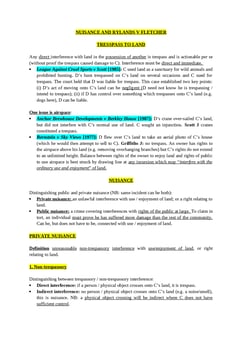Fitzgerald v Lane [1989] AC 328
Judgement for the case Fitzgerald v Lane
Table Of Contents
KEY POINTS
Damages in personal injury cases often involve apportionment, a complex concept. This occurs when two independent wrongdoers injure a plaintiff, and the plaintiff shares some blame.
The Law Reform (Contributory Negligence) Act 1945 guides the legal apportionment process. It ensures a fair distribution of liability for personal injuries. The court evaluates the fault of the plaintiff and the wrongdoers, allowing a balanced apportionment of damages. This prevents the plaintiff from bearing the full burden when multiple parties are responsible.
The Act plays a vital role in personal injury law, ensuring equitable distribution of damages in cases where both the plaintiff and others share responsibility. It safeguards the plaintiff's right to compensation, considering contributory negligence.
FACTS
In this case, the plaintiff was struck by two cars while crossing a busy street at a green pelican crossing signal. First, he was hit by the car driven by the first defendant and then by the car of the second defendant, resulting in multiple injuries and partial tetraplegia.
The plaintiff filed a negligence lawsuit against both defendants, and the trial judge found all parties—plaintiff, first defendant, and second defendant—negligent. Since it was impossible to determine varying degrees of blame, the judge ruled that responsibility should be equally shared among all three, leading to a judgment against both defendants for two-thirds of the damages.
The Court of Appeal upheld the causation and quantum aspects but accepted the defendants' appeal on apportionment. They ruled in favor of the plaintiff against each defendant for half of the awarded damages and ordered an equal contribution between the defendants.
The plaintiff then appealed the Court of Appeal's decision.
JUDGEMENT
The appeal was dismissed. In cases where a plaintiff had successfully sued multiple defendants for personal injury damages, and contributory negligence on the part of the plaintiff was established, it was crucial to differentiate between apportionment of liability between the plaintiff and the defendants under the Law Reform (Contributory Negligence) Act 1945, and apportionment of contribution between the defendants themselves under the Civil Liability (Contribution) Act 1978.
The assessment of the plaintiff's share in the responsibility for the damage sustained should not have been conflated with determining the individual culpability of each defendant. The trial judge had erred by not separating these two stages and allowing his judgment on contributory negligence to influence his decision on the proper distribution of blame among the defendants.
The judge's order, which had implied that each defendant was twice as blameworthy as the plaintiff, was erroneous based on the facts. In this case, the plaintiff had significantly contributed to his misfortune. Therefore, an order that granted judgment to the plaintiff against each defendant for 50% of his claim had been a generous and appropriate award.
COMMENTARY
In personal injury cases involving multiple parties, apportionment becomes crucial. The Law Reform (Contributory Negligence) Act 1945 guides the fair distribution of liability when a plaintiff shares responsibility for the harm caused by multiple wrongdoers. This legal framework prevents the plaintiff from bearing the entire burden. In a recent case, the plaintiff was injured by two cars while crossing the street.
The trial judge initially divided the responsibility equally among the plaintiff and defendants. The Court of Appeal, while upholding other aspects, corrected the judgment. It emphasized distinguishing between apportionment of liability and contribution among defendants.
The trial judge's conflation of these aspects led to an erroneous judgment. The final decision ordered each defendant to pay 50% of the damages, acknowledging the plaintiff's significant contribution to the incident.
ORIGINAL ANALYSIS
Plaintiff was crossing the road when there was a green light for the traffic and was hit first by one car which threw him in the direction of the second car which also hit him.
Plaintiff sued both drivers (Defendant 1 and Defendant 2).
HL held that Plaintiff was able to sue for negligence but had a large portion taken off for contributory negligence.
Lord Ackner
-
The correct approach is to ask:
Whether Defendant was liable,
For how much Defendant is liable (assuming all the fault is Defendant’s), and finally
Whether the liability should be reduced for contributory negligence.
Where there are disputes about contribution to the injuries between the two or more defendants, this is to be worked out in stage 2 and is separate from the question of contributory negligence which is worked out later on (in stage 3).
For Further Study on Fitzgerald v Lane
Need instant answers? Our AI exam tutor is here to help.
Ask questions 🙋 Get answers 📔 It's simple 👁️👄👁️
Our AI is educated by the highest scoring students across all subjects and schools. Join hundreds of your peers today.
Get StartedSimilar Cases
Related Product Samples
These product samples contain the same concepts we cover in this case.
| Tort Law | Defences In Tort Notes (4 pages) |

 Since 2010, Oxbridge Notes has been a trusted education marketplace, supplying high-quality materials from top achievers at universities like Oxford, Cambridge, LSE, Harvard, and Yale.
Since 2010, Oxbridge Notes has been a trusted education marketplace, supplying high-quality materials from top achievers at universities like Oxford, Cambridge, LSE, Harvard, and Yale.